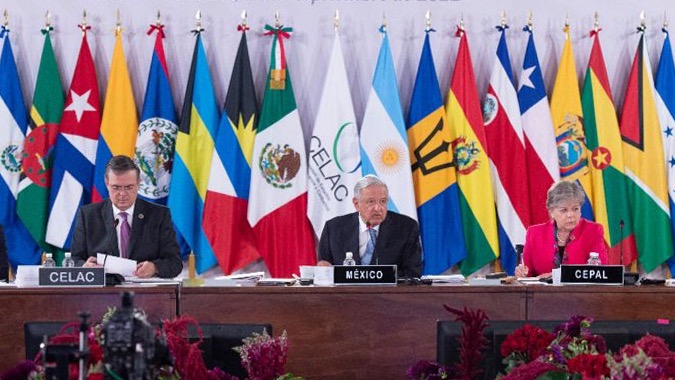Cultural Diplomacy in North America: Fostering People-to-People Connections
In today's interconnected world, fostering people-to-people connections is vital to promoting unity and cooperation between nations. North and South America, with their vibrant cultures and diverse populations, have a unique opportunity to engage in cultural diplomacy and strengthen their relations. In this article, we will explore the contemporary issues in International Relations and Cooperation in North and South America, and how cultural diplomacy can play a crucial role in building bridges between these regions.
-
Cultural diplomacy as a tool for peace: Cultural diplomacy promotes understanding, respect, and dialogue among nations, transcending political differences. By focusing on shared cultural values and traditions, it helps to bridge divides and foster peaceful relations between North and South America.
-
Building cultural bridges: Through cultural exchanges, festivals, and artistic collaborations, North and South American nations can showcase their rich heritage, promoting mutual understanding and appreciation. By embracing diversity, cultural diplomacy creates an atmosphere conducive to cooperation.
-
Economic benefits: Cultural diplomacy also has significant economic implications. By promoting tourism, trade, and investment, it can boost the economies of both North and South America. Cultural tourism, for example, can generate revenue and create job opportunities in local communities.
-
Addressing shared challenges: Cultural diplomacy can be a platform to tackle common issues faced by North and South America, such as climate change, sustainable development, and social inequality. By working together, nations can pool their resources and expertise to find innovative solutions.
-
Strengthening regional alliances: Cultural diplomacy enhances regional cooperation by fostering a sense of solidarity among North and South American nations. By celebrating shared values and traditions, it strengthens regional alliances and creates a united front to address global challenges.
-
Educational opportunities: Cultural exchanges promote educational opportunities for students, researchers, and professionals. By studying abroad or attending conferences and workshops, individuals can gain valuable knowledge and skills, enriching their communities upon their return.
-
Diaspora engagement: Cultural diplomacy can also leverage the power of diaspora communities in North and South America. By engaging with their cultural heritage, diaspora groups can act as cultural ambassadors, facilitating dialogue and understanding between their home countries and their host countries.
-
Social integration: Cultural diplomacy encourages social integration by promoting acceptance and respect for different cultural backgrounds. By fostering inclusive societies, North and South America can create an environment where diversity is celebrated and everyone can thrive.
-
Sports diplomacy: Sports play a significant role in uniting nations and fostering friendly competition. Events such as the Pan American Games and the Copa America bring people together, transcending borders and promoting friendship among athletes and spectators alike.
-
Tech-enabled cultural diplomacy: In today's digital age, technology plays a crucial role in cultural diplomacy. From virtual exhibitions to online collaborations, technology enables greater accessibility to cultural exchanges and facilitates cross-border dialogue.
-
Youth engagement: Engaging young people is essential for the success of cultural diplomacy. By empowering the youth through educational programs, internships, and leadership opportunities, North and South America can ensure a bright future built on cooperation and understanding.
-
Indigenous cultural diplomacy: Recognizing and promoting the rich cultural heritage of indigenous communities in North and South America is an essential aspect of cultural diplomacy. By respecting indigenous traditions and supporting their cultural expressions, a more inclusive society can be created.
-
Cultural diplomacy as a soft power tool: Cultural diplomacy is a powerful soft power tool that can shape perceptions and foster goodwill towards North and South America. By promoting their cultural exports, such as music, art, and films, these regions can influence global narratives and strengthen their influence on the world stage.
-
Public-private partnerships: Collaboration between governments, NGOs, and private entities is crucial to the success of cultural diplomacy initiatives. By pooling resources, knowledge, and expertise, these partnerships can amplify the impact of cultural diplomacy in North and South America.
-
Take action: If you are passionate about contemporary issues in International Relations and Cooperation in North and South America, there are several ways to get involved. Participate in cultural exchange programs, attend cultural events, and support initiatives that promote unity and understanding. By actively engaging in cultural diplomacy, you can contribute to a brighter future for North and South America.
In conclusion, cultural diplomacy serves as a powerful tool to foster people-to-people connections in North and South America. By promoting understanding, celebrating diversity, and addressing shared challenges, cultural diplomacy can pave the way for stronger regional alliances and a more united continent. Let us embrace our cultural heritage, engage in dialogue, and work towards a future where North and South America stand united on the global stage.




